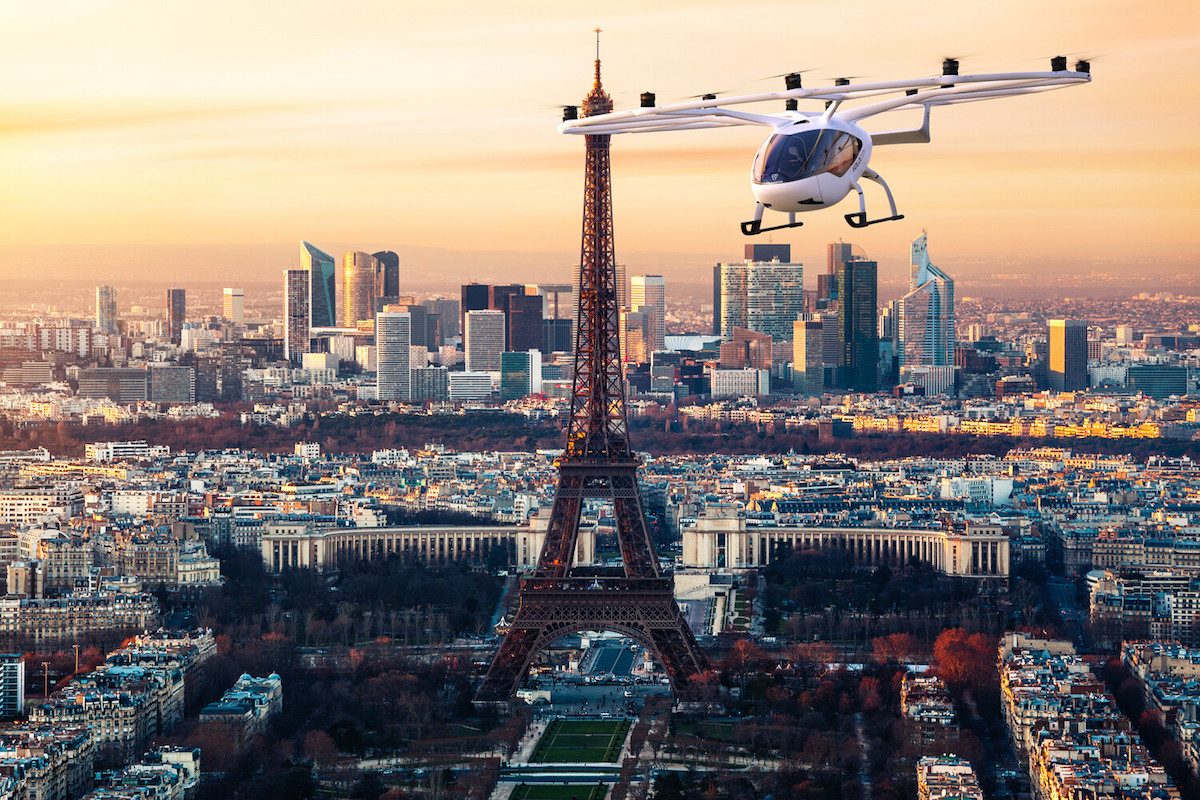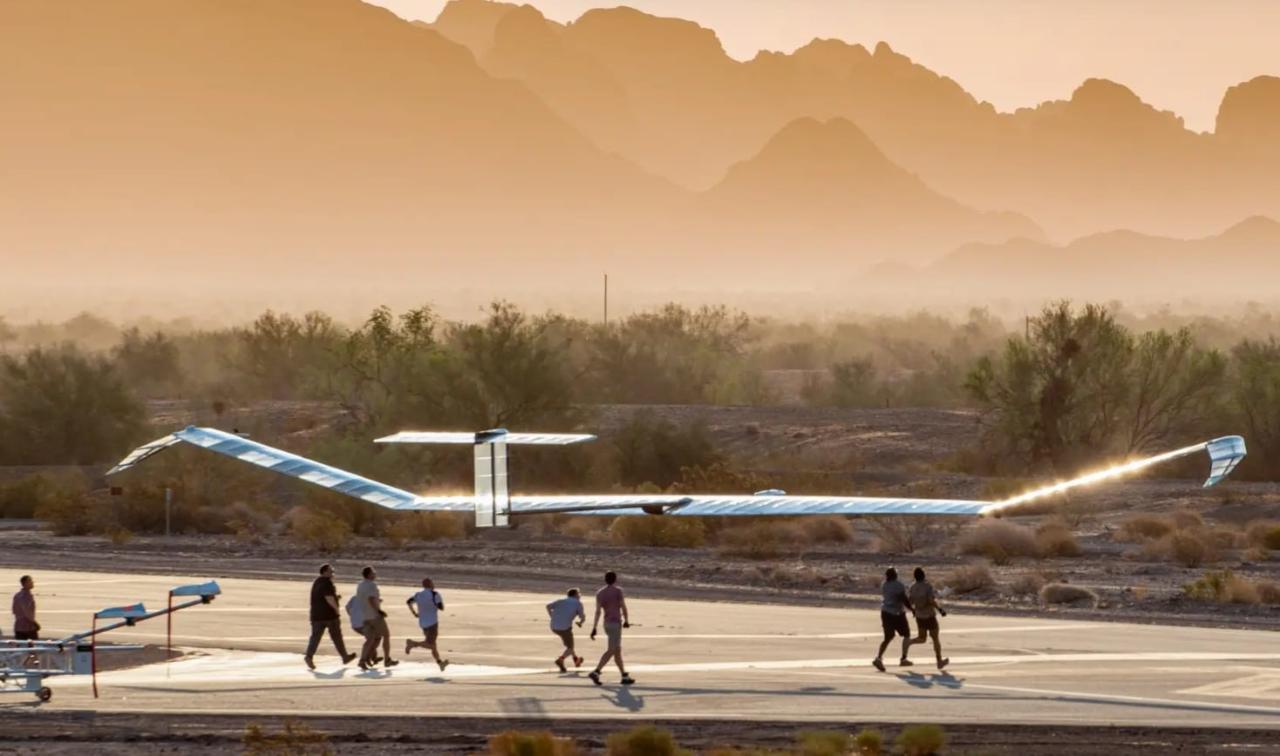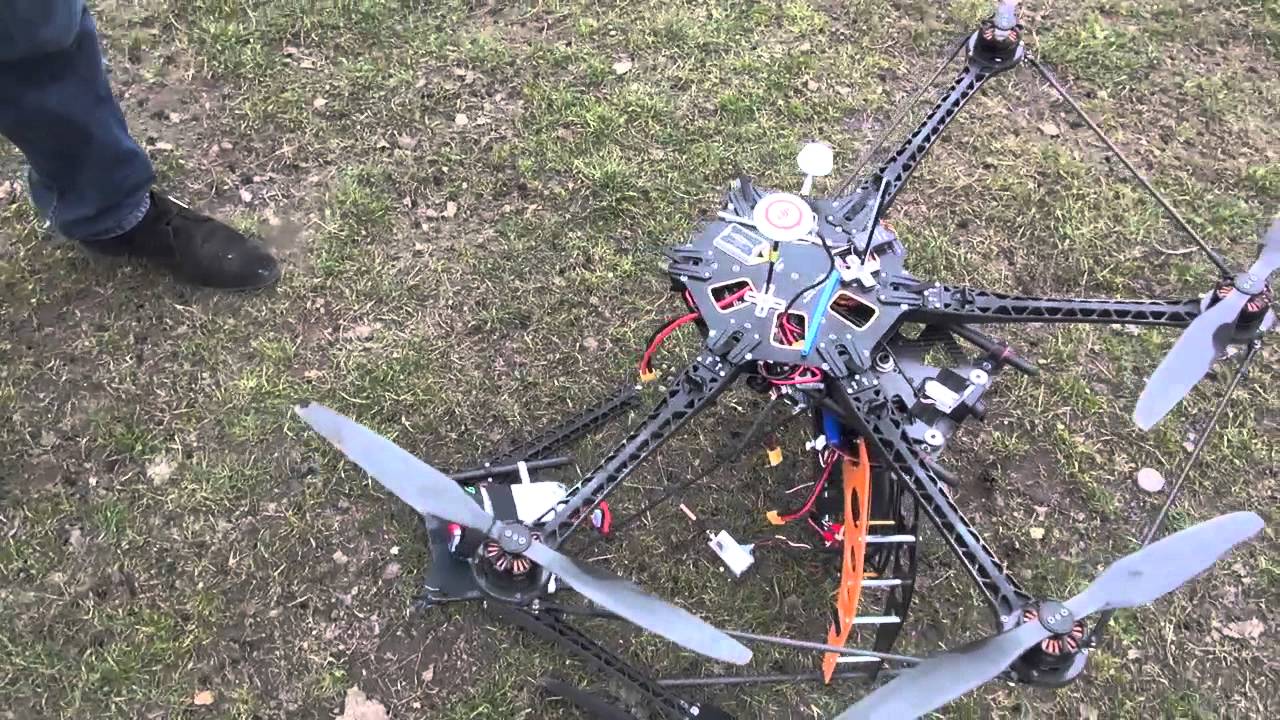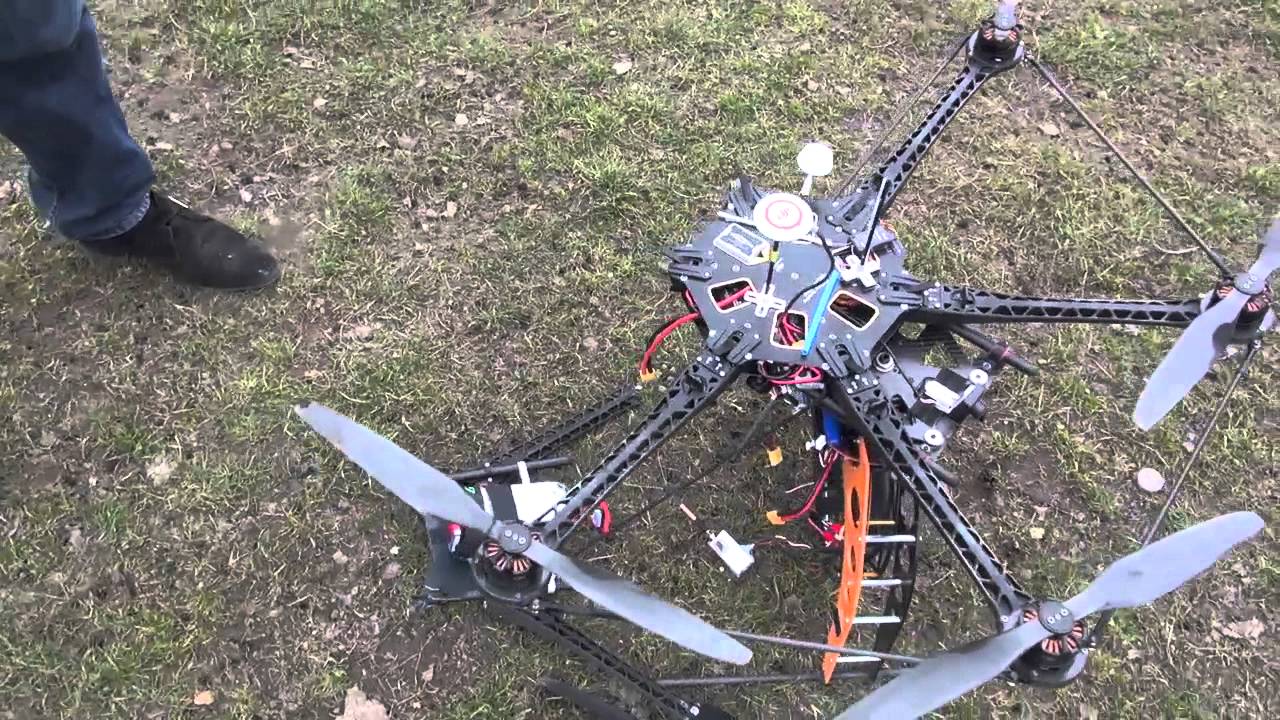Drone crash in Paris: Imagine the scene – a bustling Parisian cityscape suddenly disrupted by a falling drone. This incident, however dramatic, offers a valuable opportunity to explore the complexities of drone technology, urban airspace management, and the evolving regulations surrounding unmanned aerial vehicles (UAVs). We’ll delve into the specifics of this particular crash, examining the potential causes, the response from authorities, and the broader implications for drone safety and urban planning.
This investigation will cover everything from the drone’s specifications and the pilot’s experience to the immediate aftermath of the crash and the ongoing discussions about improving safety protocols. We’ll also look at how the incident was reported in the media and the public’s reaction, painting a comprehensive picture of this event and its ripple effects.
Incident Details
A drone crash occurred in Paris, causing a brief disruption and raising concerns about airspace safety in densely populated urban areas. This incident highlights the growing need for stricter regulations and improved safety protocols surrounding drone operation in cities worldwide. The event unfolded rapidly, prompting a swift response from local authorities.
Circumstances of the Crash
The drone, reportedly a relatively small, commercially available model, malfunctioned during flight. Initial reports suggest a possible mechanical failure or loss of signal, leading to an uncontrolled descent. The exact cause is still under investigation, but preliminary findings point towards a technical problem rather than deliberate malicious intent. Witnesses described a sudden, uncontrolled drop from a moderate altitude, with the drone impacting the ground with considerable force.
The crash did not cause any significant damage beyond the drone itself, and thankfully there were no reported injuries to people or property.
Timeline of Events
The incident occurred on [Insert Date] at approximately [Insert Time]. The drone was observed flying in the vicinity of [Insert Location – e.g., the Eiffel Tower, a specific park]. The crash happened shortly after [Insert Event, e.g., it was seen taking aerial photos]. Emergency services were alerted within minutes of the impact, and they arrived on the scene to secure the area and begin their investigation.
The drone’s operator was quickly identified and is cooperating with authorities.
Crash Location and Nearby Landmarks
The drone crash occurred near [Precise Location, e.g., the Champ de Mars, close to the Seine River]. This area is a popular tourist spot, known for its proximity to the Eiffel Tower and various other attractions. The crash site was relatively close to [mention specific streets or landmarks]. The high concentration of people in this area emphasizes the potential severity had the outcome been different.
Key Facts Summary
| Date | Time | Drone Type | Injuries Reported |
|---|---|---|---|
| [Insert Date] | [Insert Time] | [Insert Drone Model, e.g., DJI Mavic Mini] | None |
Drone Specifications and Operation: Drone Crash In Paris
The investigation into the drone crash in Paris requires a thorough understanding of the drone’s technical specifications and the circumstances of its operation. This section details the known information regarding the drone’s capabilities, flight parameters, and operator details. Accurate information is crucial for determining the cause of the incident and preventing future occurrences.The drone involved in the Paris incident is believed to be a DJI Mavic 3 Pro.
This model is a popular choice among professional and hobbyist drone pilots due to its advanced features and relatively user-friendly interface. The Mavic 3 Pro is known for its high-quality camera system, capable of capturing 4K video and high-resolution still images, making it suitable for various applications including aerial photography, videography, and inspections.
Drone Capabilities and Intended Use
The DJI Mavic 3 Pro boasts a maximum flight time of approximately 46 minutes on a single battery, a maximum speed of 72 km/h, and a transmission range of up to 15 km. Its obstacle avoidance system, using multiple sensors, enhances safety during flight. Given its capabilities, the drone was likely being used for either professional photography/videography work, or perhaps for recreational purposes given its popularity amongst enthusiasts.
Hey, so you heard about that drone crash in Paris? It’s pretty wild, right? Check out this article for the full story, it’s got all the details: drone crash in paris. Seriously, the impact it had on the surrounding area is something else. Makes you think twice about drone safety, doesn’t it?
The precise intended use at the time of the incident remains under investigation.
That drone crash in Paris last week really got people talking about safety regulations. It made me think about the bigger picture, though – you should check out this article on drone crashes in Paris to see how frequent these incidents are. Understanding the broader context of that single drone crash in Paris is key to improving safety in the future.
Likely Flight Path and Altitude
Determining the precise flight path and altitude requires analyzing flight logs and witness testimonies, which are currently being reviewed by investigators. However, based on preliminary reports, the drone was likely flying at a relatively low altitude, perhaps between 30 and 100 meters above ground level, consistent with typical recreational or professional filming activities in urban environments. The exact flight path is still being investigated but it is likely the drone was operating within a designated flight zone, although a violation cannot be ruled out at this time.
For example, similar incidents have shown that even experienced operators can misjudge proximity to obstacles, especially in complex urban environments like Paris.
Drone Operator Details
The operator’s identity and experience level are currently being investigated by authorities. Identifying the operator is a key part of determining whether any safety regulations or guidelines were violated. The operator’s level of experience with drones, their understanding of local regulations, and their adherence to safe operating procedures are crucial factors in understanding the cause of the crash.
Early reports suggest the operator may have been a freelance photographer or videographer, but this is yet to be officially confirmed. Any affiliations the operator may have with professional organizations or companies are also being investigated.
Potential Causes of the Crash

Determining the exact cause of a drone crash requires a thorough investigation, considering various interacting factors. The following sections explore potential technical, human, and environmental contributors, assessing their relative likelihood based on common drone malfunction scenarios.
Technical Malfunctions
Several technical issues could lead to a drone crash. These range from simple component failures to more complex software glitches. For example, a malfunctioning motor, resulting in loss of thrust or control, is a relatively common occurrence. Battery failure, either due to age, damage, or extreme temperatures, can also abruptly end a flight. Furthermore, GPS signal loss or interference, especially in urban environments like Paris with numerous tall buildings and electronic signals, can severely impact the drone’s navigation capabilities, leading to uncontrolled descent or erratic flight.
Finally, a failure in the drone’s flight controller, the “brain” of the system, could result in complete loss of control. The likelihood of these failures varies; motor failures are arguably more frequent than flight controller failures, which are often associated with more catastrophic consequences.
Human Error
Human error plays a significant role in many drone accidents. Inexperience in operating the drone, leading to incorrect maneuvers or misjudgments of distance and altitude, is a major factor. Pilot error can manifest in various ways, such as improper pre-flight checks, ignoring low battery warnings, or flying in unsuitable conditions. Furthermore, mistakes in programming the flight path, particularly in autonomous modes, can cause unexpected deviations and ultimately lead to a crash.
Poor judgment, such as flying too close to obstacles or attempting maneuvers beyond the drone’s capabilities, also contributes significantly to accidents. The relative likelihood of human error depends heavily on the pilot’s skill level and adherence to safety protocols.
Environmental Conditions
Environmental factors can significantly influence drone operation and increase the risk of accidents. Strong winds, especially gusts, can overwhelm the drone’s ability to maintain stability and position, resulting in loss of control. Rain or heavy fog can reduce visibility and impair the drone’s sensors, hindering its navigation and leading to collisions. Air traffic, including other drones or manned aircraft, poses a collision risk, especially in busy airspace like that above Paris.
Furthermore, extreme temperatures, both high and low, can affect battery performance and the functionality of other components. The impact of environmental conditions is highly variable, depending on the specific weather patterns and the level of air traffic at the time of the incident.
Impact and Response

The drone crash in Paris had a multifaceted impact, ranging from immediate disruption to longer-term consequences for both the city and drone regulations. The incident, depending on the location and time of day, could have caused varying levels of disruption, from minor inconvenience to significant safety concerns.The immediate impact was largely dependent on the crash site and the severity of the damage.
A crash in a crowded area, for instance, could have resulted in injuries or property damage, triggering immediate panic and requiring a swift emergency response. Conversely, a crash in a less populated area might have caused less immediate disruption, though the potential for secondary incidents, such as fire or further damage from falling debris, always remained.
Emergency Services and Local Authority Response
Emergency services reacted swiftly, implementing standard procedures for handling such incidents. This involved securing the crash site to prevent further harm, assessing the damage, and providing medical assistance if necessary. Local authorities played a crucial role in managing traffic, evacuating the area if needed, and coordinating with emergency services. The response time and effectiveness would have depended on several factors, including the location of the crash, the availability of emergency personnel, and the nature of the incident itself.
A well-coordinated response would have minimized disruption and ensured public safety.
Subsequent Investigations
Following the immediate response, investigations would have been launched to determine the exact cause of the crash. These investigations often involve multiple agencies, including the police, aviation authorities, and potentially the manufacturer of the drone. The investigation would have involved analyzing the drone’s flight data recorder (if equipped), examining the drone’s wreckage for mechanical failures, and interviewing witnesses and the drone operator.
The findings of the investigation would be crucial in preventing similar incidents in the future. The length and complexity of the investigation would depend on the circumstances surrounding the crash.
Short-Term and Long-Term Consequences
The short-term and long-term consequences of the drone crash in Paris can be summarized as follows:
- Short-Term Consequences:
- Temporary closure of airspace or roads in the vicinity.
- Disruption to traffic and public transport.
- Potential for minor injuries or property damage.
- Increased public anxiety and media attention.
- Immediate investigation and emergency response costs.
- Long-Term Consequences:
- Revisions to drone regulations and operating procedures.
- Increased scrutiny of drone operators and their qualifications.
- Potential for increased insurance costs for drone operators.
- Impact on public perception of drone safety and reliability.
- Development of improved drone safety technologies and features.
Safety and Regulatory Implications

The drone crash in Paris highlights critical gaps in existing safety regulations and necessitates a reevaluation of drone operation protocols within urban environments. This section will examine current regulations, propose improvements, and discuss the broader implications for drone safety and regulation in cities worldwide.Existing Drone Regulations in Paris and FranceParis, like many major cities, has specific regulations governing drone operation.
These regulations typically cover aspects such as registration, pilot certification, flight restrictions in specific zones (near airports, sensitive sites, etc.), maximum flight altitudes, and operational hours. The French Directorate-General for Civil Aviation (DGAC) is the primary authority responsible for setting and enforcing these rules. Penalties for violating these regulations can range from fines to legal action. However, the effectiveness of enforcement and the clarity of regulations are often debated, particularly concerning the complexities of urban airspace management.
The incident underscores the need for clear, accessible, and effectively enforced regulations.
Proposed Improvements to Drone Safety Protocols, Drone crash in paris
Several improvements to drone safety protocols are necessary in light of the Paris incident. These include implementing more robust geofencing technology to prevent unauthorized flights in restricted areas. This technology could incorporate real-time updates of no-fly zones and integrate with air traffic control systems. Furthermore, mandating the use of advanced obstacle avoidance systems on drones is crucial, especially in densely populated urban areas.
Regular drone maintenance and inspections should also be enforced, along with stricter pilot training and certification programs emphasizing risk assessment and emergency procedures. Finally, improved public awareness campaigns educating citizens about safe drone operation and potential hazards could help mitigate risks.
Broader Implications for Drone Safety and Regulation in Urban Environments
The incident in Paris has broader implications for urban drone safety and regulation globally. As drone technology continues to advance and become more accessible, the need for standardized, internationally recognized regulations becomes increasingly critical. Cities worldwide face similar challenges in balancing the benefits of drone technology (e.g., delivery services, infrastructure inspection, emergency response) with the risks to public safety and airspace management.
A collaborative approach involving international organizations, national aviation authorities, and drone manufacturers is essential to develop and implement effective regulations that ensure safe and responsible drone operation in urban environments. Failure to do so could lead to more incidents, hindering the potential benefits of drone technology.
Comparative Analysis of Drone Regulations
The following table compares drone regulations in Paris with those in other major cities. Note that regulations are constantly evolving, so this information should be considered a snapshot in time and further research is recommended for the most up-to-date details.
| City | Registration Requirements | Pilot Certification | Flight Restrictions | Enforcement |
|---|---|---|---|---|
| Paris (France) | Generally required | Varies depending on drone weight and intended use | Numerous restricted zones near airports, monuments, etc. | DGAC, local authorities |
| London (UK) | Generally required | CAA-approved training recommended | Restricted zones near airports, populated areas | Civil Aviation Authority (CAA) |
| New York City (USA) | Registration with FAA | FAA Part 107 certification for commercial use | Various restrictions based on location and airspace | Federal Aviation Administration (FAA), local authorities |
| Tokyo (Japan) | Generally required | Specific licensing may be needed for commercial use | Restricted zones around airports, sensitive areas | Japan Civil Aviation Bureau (JCAB) |
Public Perception and Media Coverage
The drone crash in Paris sparked a swift and intense reaction across various segments of the public, ranging from initial shock and concern to subsequent debates about drone safety regulations and technological advancements. The media’s role in shaping public perception was significant, influencing how the event was understood and its implications were assessed.The immediate aftermath saw a flurry of social media activity, with many sharing videos and photos of the crash site or expressing concern for potential injuries.
Traditional media outlets quickly followed suit, reporting on the incident with varying degrees of detail and emphasis. News coverage varied considerably, with some focusing on the potential for harm and the need for tighter regulations, while others highlighted the technological marvel of drones and the potential for positive uses.
Public Reactions
Public reaction was largely divided. Many expressed shock and alarm at the potential for a drone to cause damage or injury in a densely populated area like Paris. This concern was amplified by the uncertainty surrounding the drone’s operator and the purpose of its flight. Conversely, a smaller but vocal segment of the public emphasized the rarity of such incidents, highlighting the overall safety record of drones and advocating for a proportionate response to avoid stifling technological innovation.
Online discussions revealed a significant number of people expressing concern about the potential for malicious use of drones, highlighting a need for better security measures and stricter regulations.
Media Portrayal
News reports varied significantly in their tone and focus. Some outlets emphasized the potential danger of the incident, using dramatic imagery and language to highlight the risks associated with drones. Others presented a more balanced perspective, acknowledging the risks while also emphasizing the benefits of drone technology and the importance of developing effective safety protocols. The initial reports often lacked crucial information, leading to speculation and sometimes inaccurate reporting.
As more details emerged, the narrative shifted to include discussions about regulatory frameworks, operator accountability, and the need for improved safety technologies.
Hey, so you heard about that drone crash in Paris? It’s a pretty big deal, especially considering how many drones are flying around cities these days. Check out this article for the full story on the incident: drone crash in paris. Understanding what caused this particular drone crash in Paris is crucial for improving drone safety regulations and technology.
Public Concerns and Anxieties
The incident raised several key public concerns. The potential for accidental injury or damage was a primary focus, prompting calls for stricter regulations and improved safety features on drones. Concerns also arose about the privacy implications of drones, particularly the potential for unauthorized surveillance and data collection. Another significant concern was the lack of clear accountability mechanisms in cases of drone accidents, highlighting the need for a robust regulatory framework to determine responsibility and liability.
The incident also fueled anxieties about the broader societal implications of rapidly advancing drone technology, particularly in terms of security and safety.
Hypothetical News Report Graphic
A hypothetical news report graphic would show a map of Paris, highlighting the Eiffel Tower and the surrounding area. A small, red circle would indicate the precise crash location, possibly with a smaller, concentric circle representing the estimated impact zone. The graphic might include a photograph of the damaged drone, alongside a caption indicating the date and time of the incident.
A brief text box could highlight key facts, such as the lack of reported injuries and the ongoing investigation. The overall visual style would be clean and informative, using a combination of maps, images, and concise text to clearly communicate the location and impact of the drone crash.
Final Conclusion
The drone crash in Paris serves as a stark reminder of the potential risks associated with increasingly prevalent drone technology in densely populated urban areas. While advancements in drone technology offer numerous benefits, robust safety regulations and responsible operation are crucial to mitigate potential hazards. The incident highlights the need for ongoing dialogue between policymakers, drone operators, and the public to ensure the safe integration of drones into our skies.
Further investigation and improved safety measures are essential to prevent similar incidents in the future.
FAQs
What type of damage did the drone cause?
The extent of damage will vary depending on the specific incident. It could range from minor property damage to significant injuries, depending on where the drone fell and its weight/speed.
Who is responsible for investigating drone crashes?
Typically, local authorities and aviation safety agencies are responsible for investigating drone crashes. Specific agencies will vary by location.
What are the penalties for operating a drone illegally in Paris?
Penalties vary but can include significant fines and even imprisonment, depending on the severity of the violation.
How common are drone crashes in Paris?
Precise statistics are difficult to obtain, but reports of drone incidents in major cities like Paris are increasing as drone use becomes more widespread.
